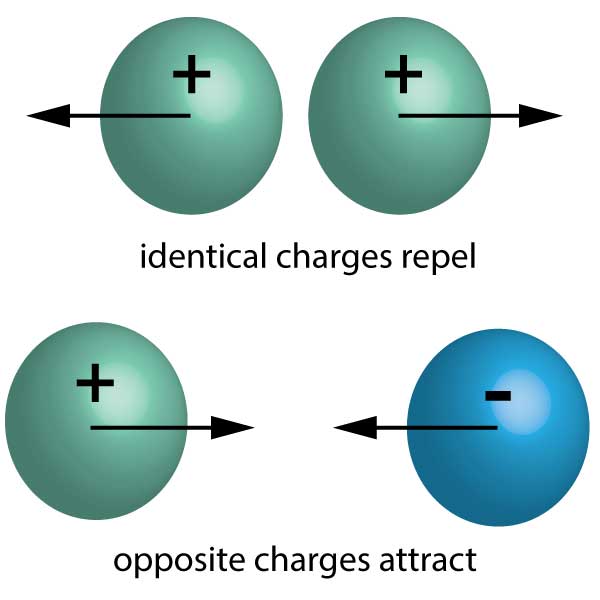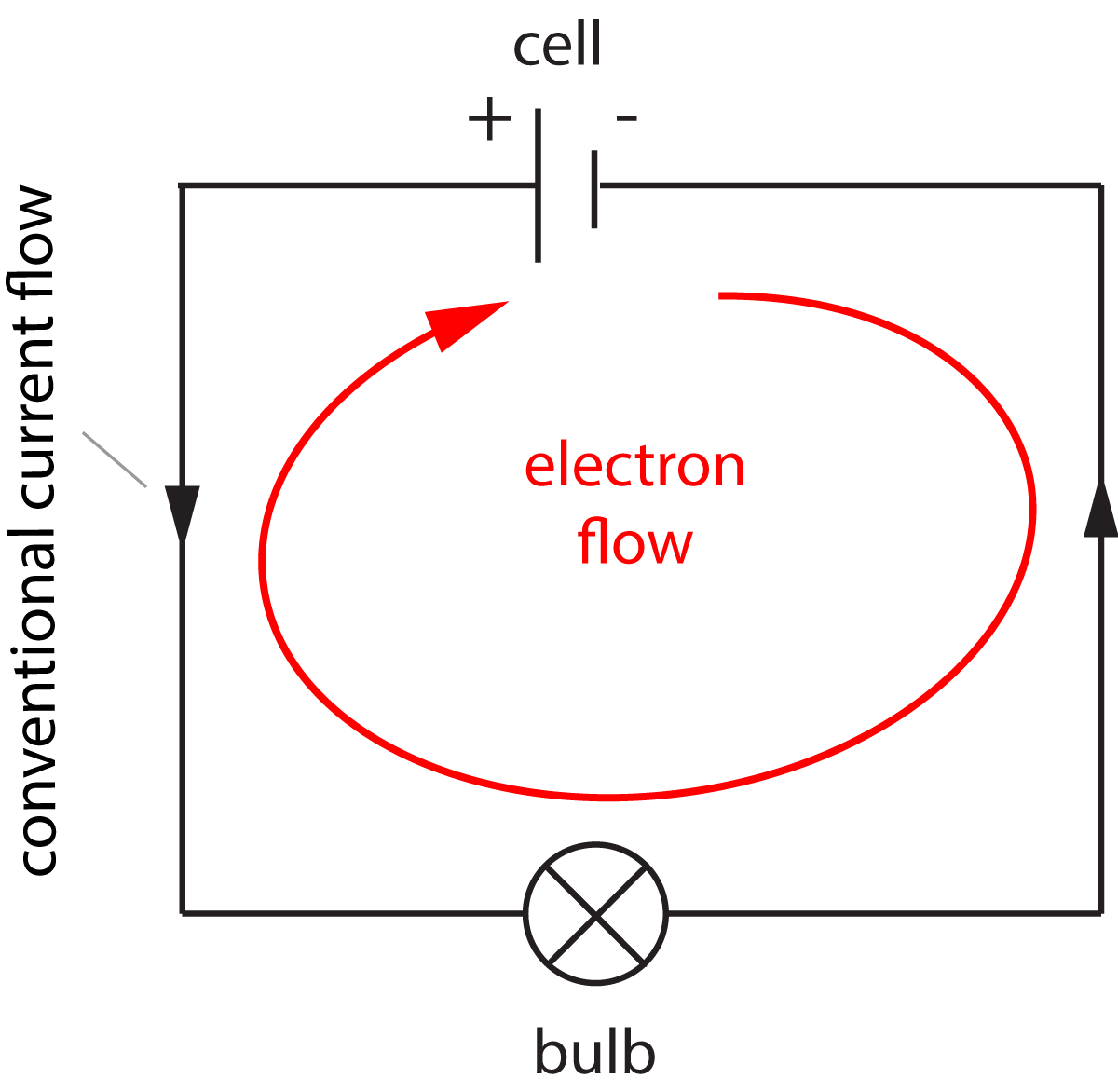Physics
Cambridge IGCSE
TOPIC 4A: ELECTRICITY
We rely on electricity in our everyday lives and often overlook its significance, yet it wasn't long ago that we had little understanding of it. The electric light bulb was invented in 1802, but it wasn't until the early 20th century that it became a standard feature in households.
In this section we will learn about the fundamental properties of electricity - what is it? What is actually moving in the wires?
In 1897, J.J. Thompson discovered the electron. You may have met electrons already in your chemistry course. He found that electrons were very small particles with a very small negative charge. This discovery led to an understanding of electricity - it is caused by a flow of free negatively charged electrons in metals (and many other solid conductors like graphite). The more electrons flow past any point in a second, the higher the current of electricity.

Figure 1 - Current in a metallic conductor
An electrical conductor is a substance with charges that can flow relatively freely, and when a voltage is applied, a significant current flows. As you should know, the most common conductors are metals, of which copper is probably the most widely used in the electricity industry. Other conductors include tap water and graphite (a form of carbon found in pencils).
Metals have a large number of free electrons that can move through the substance easily, creating the current. We call these delocalised electrons.
Insulators do not have free electrons or any other charges that can move easily and produce a current. They are poor conductors with a very high resistance. Common insulators are plastics, rubber and air.
As the name implies, static electricity does not flow through substances - it stays in one place. It is made when charges build up on insulators. We say that a substance has been charged, with either a positive or negative charge.
The most simple way to produce static electricity is through friction. Here's a simple practical to produce static electricity and also to test that it is present, as shown in this video.
YouTube 1. Producing and demonstrating static electricity
The video shows how rubbing the plastic with the cloth produces friction, and it is this friction that produces a build-up of static electricity.
Simply rub the cloth on the plastic (or other insulator like Styrofoam or PVC).
To show that a static charge has been produced, try picking up small pieces of tissue paper as shown in the video. This demonstrates that a force has been produced between the plastic and the paper. You can then try other substances and see which ones work and which do not. Not all insulators work with this type of cloth duster, and the experiment needs to be in a dry, warm place. Static leaks away quickly in the presence of water, so if you are in a humid country, this experiment rarely works!
In the next video, we can see a wide range of demonstrations and some great tricks!
YouTube 2- Awesome tricks with static electricity (brusspup)
Note that static electricity is not in the combined science syllabus, but it is the best way of demonstrating that charges can produce forces, as explained below.
Just like magnets, static charges produces forces of attraction and repulsion, and the rules are very similar:

Figure 5 - Static repulsion and attraction
Both of the YouTube videos at the start of this section show charged objects being used to produces forces and move objects. The video below shows that sparks produced by static electricity near fuel can be extremely dangerous!
YouTube 3 - The dangers of static electricity (Brainiac Store)
Questions:
1. In any atom, negative electrons orbit around a nucleus containing positive protons. Describe the force between positive and negative charges like electrons and protons.
All positive and negative charges will attract each other. This is what keeps electrons in orbit around the nucleus.
When charges move from one place to another, we describe it as a current of electricity, as discussed above. But how are current and charge measured?
The measurement for charge is named after Charles-Augustin de Coulomb. One coulomb (C) is an enormous charge compared to the electron - it would need about 8 billion billion electrons (or protons) to make 1 coulomb of charge. For historical reasons, the letter given to the measurement of charge is 'Q'.
Current in a circuit is defined as the rate of flow of charge - this means the charge flowing past a point per unit of time. Current is measured in amps (short for the 'ampere').
If 2 coulombs of charge flows through a resistor each second, then the current is 2 amps.
As a formula we can write:
| current = | charge |
| time |
| I = | Q |
| t |
[amps] = [coulombs] / [seconds]
Here are a few practice questions to gain confidence with this formula:
Example:
What charge flows through a 6V, 2A motor left on for 30 seconds?
Answer:
Although the voltage is given, this is not needed to solve this question!
We know that I = Q/t, and therefore Q = I t = 2 A x 30 seconds
Therefore charge flowing is = 2 x 30 = 60 coulombs
Questions:
2. A 0.3 amp household lamp is left on for 5 minutes. Calculate the charge flowing through the lamp in this time.
In 5 minutes, the time in seconds is 5 x 60 = 300 s,
We know that I = Q/t and so Q = I x t
Therefore Q = 0.3 x 300
Q = 90 coulombs
3. A 30 mA L.E.D. is left on for some time. During this interval, 6 C of charge flows through it. How long was the L.E.D. on for?
30 mA = 0.03 A, or if you are using standard form, 30 x 10-3 A (= 3 x 10-2 A).
If I = Q/t, then:
| t = | Q |
| I |
| t = | 6 |
| 3 x 10-2 |
Before electrons were discovered, scientists were drawing diagrams with current flowing from positive to negative around a circuit. The discovery of electrons confused things, because it meant the charge carriers in metals were negative, and must flow from negative to positive around the circuit! This problem was side-stepped completely - we still draw the 'conventional current' direction as positive to negative, and just ignore the flow of electrons in the opposite direction. Stick with your current arrows as positive to negative!

Figure 10 - Conventional current and electron flow
This link takes you to a quiz on electrical charge: